Ijen Crater: The World’s Largest Acid Lake and Blue Fire
14 Januari 2024 2.383x Articles Blog
Ijen Crater: The World’s Largest Acid Lake and Blue Fire
The Ijen crater in Banyuwangi is one of the most spectacular sights in the world. Don’t leave Indonesia without seeing it, especially if you’re visiting Java or Bali!
Ijen Crater Lake is the world’s largest acidic lake and is also known for a strange phenomenon called the Ijen Crater Blue Fire, where hot blue flames burn like lava in the darkness.
That’s fantastic news! Ijen Crater’s accessibility makes it a truly compelling destination for both Bali-based travellers and those exploring the wonders of East Java.
This article how to get to Ijen Crater, where to stay, entrance fees, safety tips, and everything else you need to know before your trip.
Where Is Ijen Crater?
Ijen Crater is located in East Java, Indonesia, on the border between Banyuwangi Regency and Bondowoso Regency. It’s part of the Ijen volcano complex, which includes Mount Ijen and other volcanic peaks.
Here’s how to pinpoint its location:
- Region: East Java, Indonesia
- Regencies: Banyuwangi Regency and Bondowoso Regency
- Island: Java
- Nearest Towns: Banyuwangi, Licin
How To Get To Ijen Crater
Getting to Ijen Crater, Indonesia, involves a few different options depending on your starting point and budget. Here are the most common ways to reach this mesmerizing volcanic wonder:
From Bali:
- Private car: This is the most convenient and flexible option, taking around 8-10 hours. You can book a car with a driver through a travel agency or online platform. The cost will vary depending on the season and your bargaining skills, but expect to pay around IDR 1,000,000 (USD 70) or more.
- Public bus: To get to Ijen on a budget, take a bus from Denpasar Ubung Bus Terminal to Gilimanuk (approx. 40,000 IDR). Then, take a ferry to Banyuwangi (6,500 IDR) and catch a local bus to the base of Ijen (approx. 20,000 IDR). The journey takes about 12 hours including transfers.
Privat Trip Ijen from Bali : Ijen crater tour from bali
From East Java:
- Train: Take the kereta api Mutiara Timur from Surabaya Gubeng Station to Ketapang Station in Banyuwangi (around 5-6 hours, 50,000-100,000 IDR). From Ketapang, catch a local bus or minivan to the base of Ijen.
- Plane: Banyuwangi has an airport (BWI) with flights from major Indonesian cities like Jakarta and Surabaya. From the airport, you can take a taxi or minibus to the base of Ijen or you can book a tour.
Once you reach Banyuwangi:
- Rent a car or scooter: This gives you more freedom to explore the area at your own pace. Car rentals start at around IDR 300,000 per day, while scooters are much cheaper at around IDR 150,000 per day.
- Join a tour: Many tour operators in Banyuwangi offer packages that include transportation, accommodation, and the hike to the crater. This can be a good option if you’re short on time or want someone to handle the logistics.
Best Ijen Crater Tour Package
Choosing the “best” Ijen crater tour package depends on your priorities and preferences. Here are some highly-rated options to consider, categorized by what they prioritize:
For the Adventurous:
- 2-Day Ijen Blue Fire & Bromo Sunrise Tour: This package combines the ethereal blue flames of Ijen Crater with the majestic sunrise over Mount Bromo. You’ll hike to the crater rim at night to witness the mesmerizing spectacle, then catch the breathtaking sunrise over the Bromo caldera the next morning. This tour is perfect for those who want to experience the best of both volcanic wonders.
For the Budget-Conscious:
- Ijen Crater Day Trip from Banyuwangi: This option is a great way to see the blue flames without breaking the bank. You’ll depart from Banyuwangi early in the morning, hike to the crater rim, and return in the afternoon. This tour is ideal for those who are short on time or on a tight budget.
For the Luxurious:
- Private Ijen Crater Tour with Overnight Stay at Luxury Hotel: This package offers a VIP experience with comfortable transportation, a stay at a luxurious hotel near the crater, and a guided hike to the rim. This tour is perfect for those who want to relax and enjoy the scenery in style.
For the Eco-Friendly:
- Ijen Crater Tour with Homestay & Local Guide: This package supports the local community by offering homestays and employing local guides. You’ll experience the traditional way of life and gain insights into the culture of the region. This tour is ideal for those who want to travel responsibly and make a positive impact.
- Group size: Do you prefer a small group tour or a larger one?
- Accommodation: What type of accommodation are you looking for?
- Meals: Are meals included in the tour price?
- Activities: Are there any other activities included, such as visiting plantations or waterfalls?
Once you’ve considered these factors, you can narrow down your options and choose the best Ijen crater tour package for you.
Ijen Crater Hike
The Kawah Ijen hike is a challenging but rewarding experience that takes you to the top of an active volcano in East Java, Indonesia. The views from the crater rim are simply breathtaking, and the turquoise crater lake and mesmerizing blue flames are unlike anything you’ll see anywhere else in the world.
A moderate challenge: The hike is a moderate 6 6-kilometre (3.7 miles) return with an elevation gain of 435 meters (1,430 feet). The trail is well-maintained but steep, and it takes most people about 2-3 hours to reach the crater rim. Be prepared for a good workout, but the views will make it all worth it.
Otherworldly sights: The main attractions of the Kawah Ijen hike are the blue flames and the turquoise crater lake. The blue flames are caused by the combustion of sulfur gas, and they can be seen best at night. The crater lake is a beautiful turquoise colour, and it’s a great place to watch the sunrise.
Planning your trip
If you’re planning to hike Kawah Ijen, here are a few things to keep in mind:
- Book your tour in advance: The hike is popular, so it’s best to book your tour in advance, especially if you’re travelling during peak season.
- Hire a guide: A guide can help you navigate the trail and ensure your safety.
- Bring the right gear: You’ll need sturdy shoes, a raincoat, a headlamp, and a gas mask (the sulfur fumes can be strong).
- Be prepared for the cold: The temperature at the crater rim can be cold, so bring warm clothes.
- Respect the environment: The Kawah Ijen is a sacred place for the local people, so please be respectful of their culture and traditions.
I hope this information helps you plan your Kawah Ijen hike. It’s sure to be an unforgettable experience!
Here are some additional things to keep in mind:
- The best time to hike Kawah Ijen is during the dry season, from May to September.
- The hike is not recommended for young children or pregnant women.
- There are a few different accommodation options near the trailhead, but it’s also possible to stay in Banyuwangi and do a day trip.
I hope you have a great time on your Kawah Ijen hike!
Midnight Hike
A midnight hike to Kawah Ijen is an even more unique and exhilarating experience than the daytime trek. Imagine yourself winding your way up the volcanic slopes under a blanket of stars, the only sound of your footsteps and the occasional chirping of nocturnal insects. As you reach the crater rim, a sight unlike any other unfolds before you:
Eerie blue flames dance across the turquoise crater lake, fueled by the burning sulfur gases emanating from the depths of the volcano. The scene is mesmerizing and otherworldly, a glimpse into the heart of the Earth’s fiery core.
Here’s what to expect on a midnight hike to Kawah Ijen:
An even greater challenge: Hiking in the dark adds an extra layer of difficulty to the already challenging trek. The trail can be slippery and treacherous, so it’s essential to have a good headlamp and sturdy shoes. Be prepared for a slower pace than you would during the day, as you’ll need to be extra cautious of your footing.
Unparalleled beauty: The darkness amplifies the otherworldly beauty of the blue flames and the crater lake. The stars seem to shine brighter, and the Milky Way stretches across the sky like a celestial river. It’s a truly awe-inspiring sight that will stay with you forever.
A more intimate experience: With fewer people on the trail at night, you’ll have a more intimate experience of the volcano. You’ll have more time to soak in the sights and sounds of this unique natural wonder.
Planning your midnight hike:
- Choose your timing: The best time to see the blue flames is between 2:00 and 4:30 AM, when the sulfur gas concentration is at its highest.
- Hire a guide: A guide is essential for a safe and enjoyable midnight hike. They will know the trail well and can help you navigate the darkness.
- Pack the right gear: In addition to the usual hiking essentials, be sure to bring a warm jacket, as the temperature at the crater rim can be much colder than at the base.
- Be prepared for the crowds: Even though fewer people are hiking at night, the crater rim can still get crowded around sunrise. Be patient and respectful of other hikers.
If you’re up for the challenge, a midnight hike to Kawah Ijen is an unforgettable experience that will leave you breathless. Just be sure to be well-prepared and follow the safety guidelines to ensure a safe and enjoyable journey.
I hope this information helps you plan your midnight hike to Kawah Ijen! Have a fantastic and awe-inspiring time!
Ijen Crater Blue Fire
The Ijen blue fire, a natural phenomenon occurring in the Kawah Ijen crater within Indonesia’s Mount Ijen, is a sight like no other. These mesmerizing electric blue flames dance across the turquoise crater lake, fueled by the burning of sulfur gases. It’s truly a window into the fiery heart of the Earth.
Here’s what makes the Ijen Blue Fire so special:
The ColorUnlike the orange and red flames we’re used to seeing, the Ijen blue fire burns at a much higher temperature, around 1,112°F (600°C). This extreme heat excites the sulfur molecules in the gas, causing them to emit blue light. The effect is even more pronounced in the darkness of the early morning hours when the flames appear to dance like ethereal wisps.
The Location: The Kawah Ijen crater is a stunning sight in itself, with its turquoise lake nestled within the volcanic caldera. But the addition of the blue flames elevates it to a whole new level of otherworldly beauty. The contrast between the fiery blue and the cool turquoise is simply breathtaking.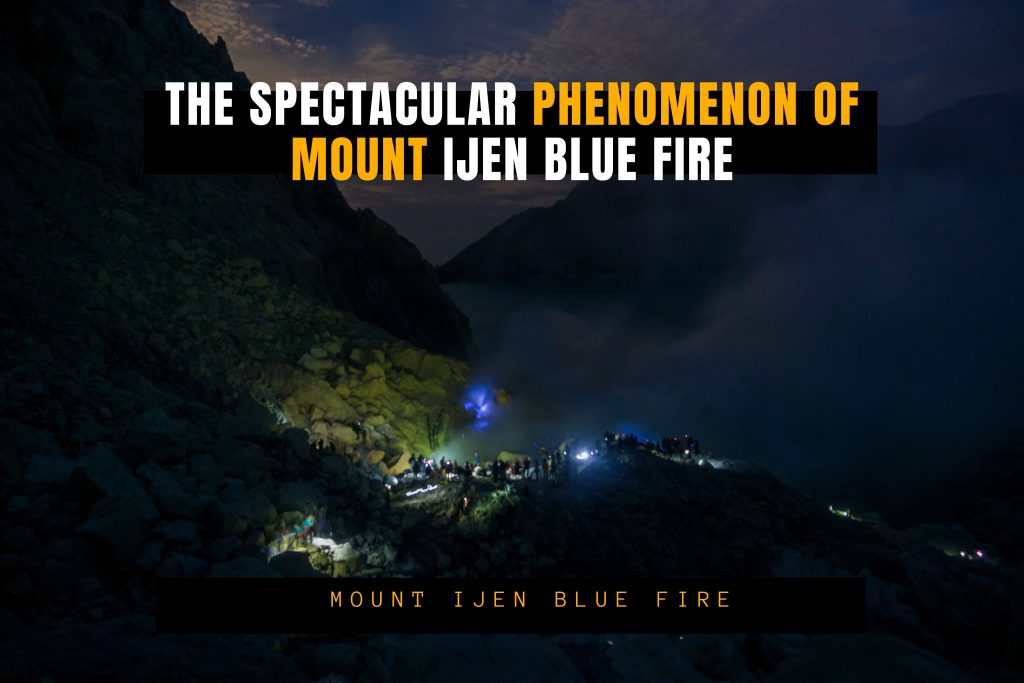
The Rarity: The Ijen blue fire is a relatively rare phenomenon, only occurring in a few places around the world. This makes it even more special and sought-after by travellers and photographers alike.
Here are some things to keep in mind if you’re planning to see the Ijen Blue Fire:
- Best time to see it: The blue flames are most visible between 2:00 and 4:00 AM when the sulfur gas concentration is at its highest. This means you’ll need to be willing to do a midnight hike, which can be challenging but ultimately rewarding.
- Hire a guide: The hike to the crater rim can be steep and slippery, especially in the dark. A local guide can help you navigate the trail safely and ensure you experience the blue flames at their best.
- Pack the right gear: Be sure to bring warm clothes, sturdy shoes, a headlamp, and a gas mask (the sulfur fumes can be strong).
- Respect the environment: The Kawah Ijen is a sacred place for the local people. Please be respectful of their culture and traditions, and don’t litter or damage the natural environment.
Seeing the Ijen blue fire is an unforgettable experience that will stay with you for a lifetime. It’s a reminder of the raw power and beauty of nature and a testament to the wonders that still exist in our world. So if you’re looking for an adventure that’s truly off the beaten path, add the Ijen blue fire to your bucket list.
I hope this information helps you plan your trip to see this incredible natural wonder!
Ijen Crater Acid Lake
The Kawah Ijen Crater Lake in Indonesia is a truly remarkable sight. It’s the world’s largest highly acidic crater lake, with a mesmerizing turquoise colour and fascinating sulfuric gas fumes that dance across its surface.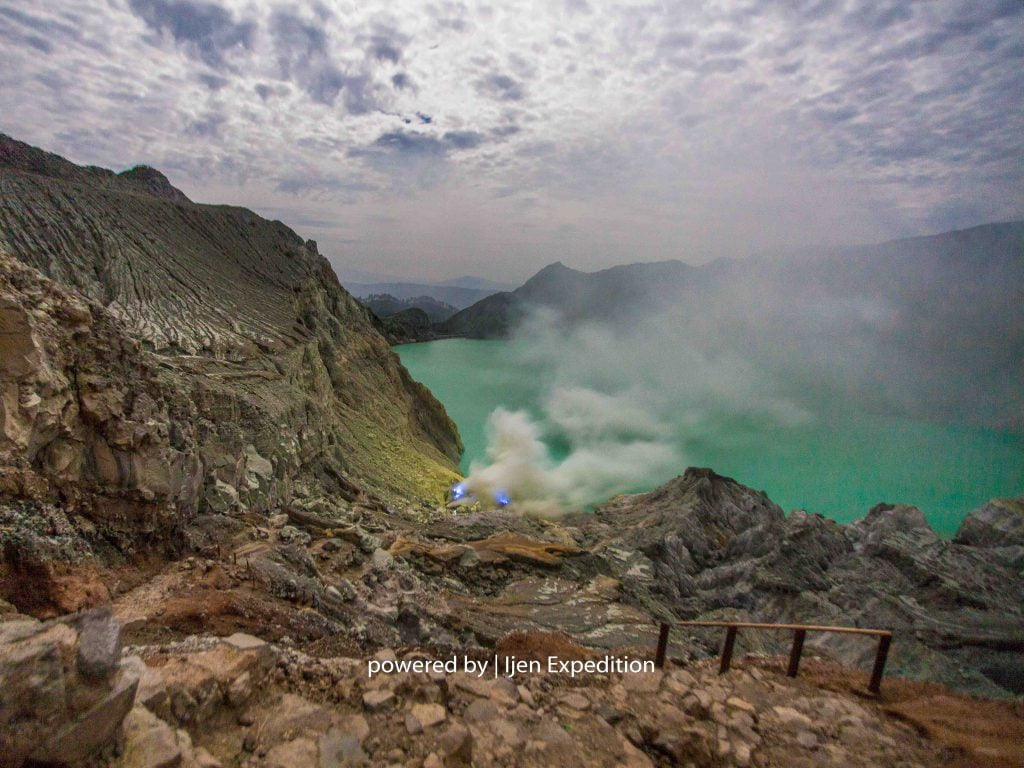
Here’s what makes the Ijen Crater Lake so special:
-
Stunning Turquoise Waters: The lake’s vibrant turquoise colour is unlike anything you’ll see anywhere else. It’s caused by a combination of dissolved sulfur and aluminium, and the contrast against the dark volcanic rock is simply breathtaking.
-
Active Volcanic Crater: Kawah Ijen is an active volcano, and the lake sits within its massive crater. This means you can witness firsthand the raw power of nature, with fumaroles releasing steam and sulfuric gas, and the ground still warm from the volcano’s heat.
-
Eerie Blue Flames: At night, the sulfur gases from the fumaroles ignite, creating electric blue flames that dance across the lake’s surface. This phenomenon, known as Ijen blue fire, is truly otherworldly and a sight to behold.
Important Safety Information:
While the Ijen Crater Lake is an incredible natural wonder, it’s important to be aware of the safety risks before you visit:
-
Acidic Waters: The lake’s water is highly acidic, with a pH level of around 0.5. Do not touch the water or allow it to come into contact with your skin or clothing.
-
Sulfuric Gas Fumes: The fumaroles around the lake release sulfuric gas fumes, which can be harmful if inhaled in large quantities. Wear a mask or bandana over your nose and mouth to protect yourself.
-
Steep Terrain: The hike to the crater rim is steep and challenging. Wear sturdy shoes and be prepared for a physical workout.
-
Respectful Behavior: The Ijen crater is a sacred place for the local people. Please be respectful of their culture and traditions, and avoid littering or damaging the natural environment.
By following these safety guidelines, you can have a safe and enjoyable experience exploring the wonders of the Ijen Crater Lake.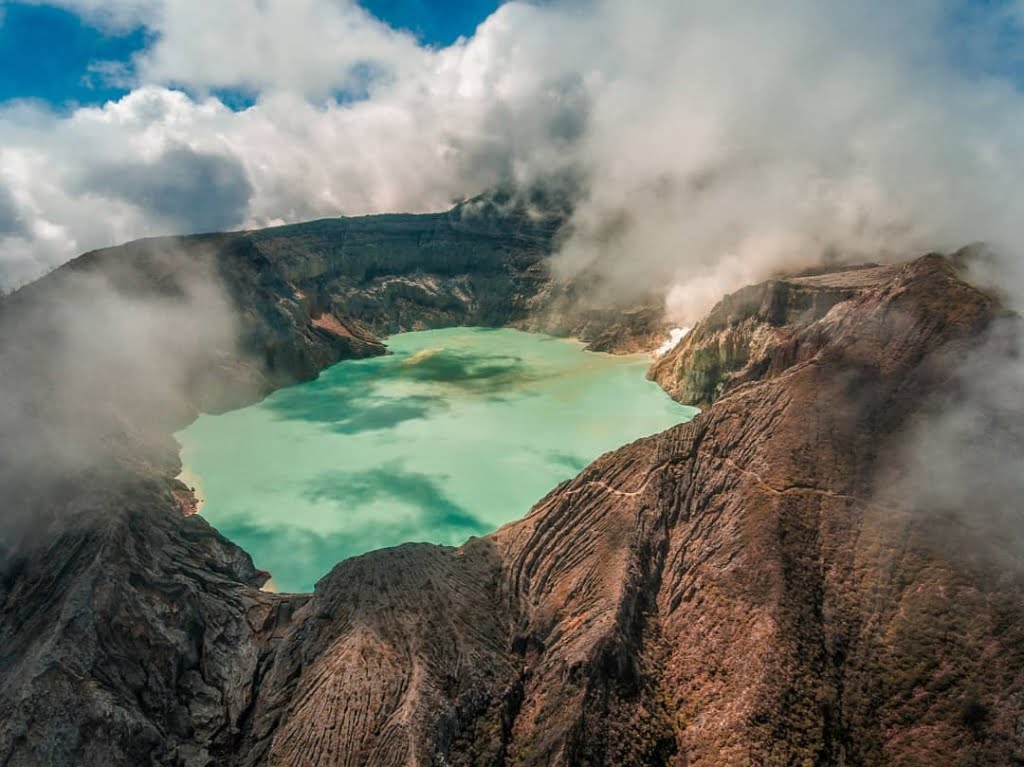
The Ijen Crater Lake is a unique and unforgettable natural wonder. With its stunning beauty and raw power, it’s a place that will leave you awestruck. Just remember to be safe and respectful, and you’re sure to have an amazing experience.
I hope this information helps you plan your trip to the Ijen Crater Lake!
Sulfur Mining At Ijen Crater
Kawah Ijen, a majestic volcano in Indonesia’s East Java, is not just known for its mesmerizing turquoise crater lake and electric blue flames. It’s also home to a centuries-old tradition of sulfur mining, a harsh and challenging livelihood practised by local miners.
Backbreaking Labor:
Sulfur mining at Ijen is a physically demanding and dangerous job. Miners, often barefoot or wearing simple sandals, descend hundreds of meters into the crater to reach the sulfur deposits. They then manually break off chunks of sulfur, weighing up to 70 kilograms, and carry them back up the steep slopes to the rim.
A Traditional Practice:
For generations, sulfur mining has been a way of life for the communities surrounding Kawah Ijen. The sulfur, used in various industries like fertilizer and pharmaceuticals, provides a vital source of income for these families. However, the working conditions are harsh and the pay is meagre. The miners face constant exposure to toxic fumes, risk burns from the hot sulfur, and endure the physical strain of carrying heavy loads on treacherous terrain.
Here are some tips for visiting Kawah Ijen:
- Choose a tour operator that is committed to ethical tourism and supports the local community.
- Hire a local guide who can explain the history and culture of sulfur mining.
- Tip the miners generously for their hard work.
- Be mindful of your environmental impact and avoid littering or damaging the natural environment.
Is Ijen Crater Safe?
Kawah Ijen is a place of breathtaking beauty and fascinating contrasts. By understanding the realities of sulfur mining and making responsible choices as a visitor, you can contribute to a more sustainable future for this unique and precious corner of Indonesia.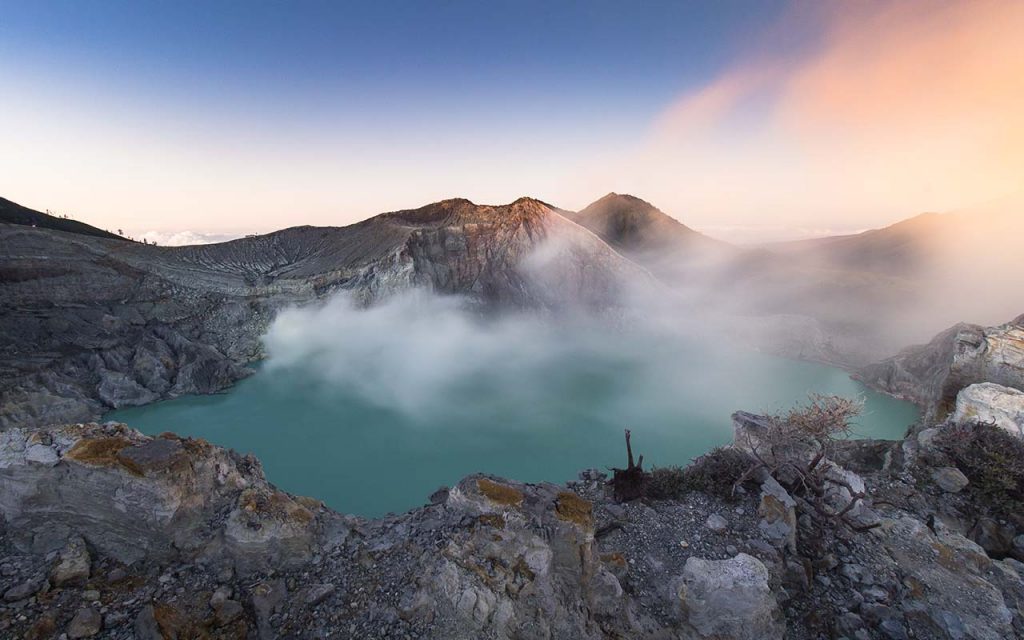
The safety of Kawah Ijen, the Indonesian volcano known for its turquoise crater lake and mesmerizing blue flames, depends on your activities and health conditions. Let’s break it down:
Generally safe for sightseeing:
-
Hiking the trails: The main pathways to the crater rim are well-maintained and suitable for most fitness levels. However, they can be steep and slippery, especially in wet weather. Sturdy shoes and good physical condition are recommended.
-
Viewing the crater lake and blue flames: Observing these natural wonders from designated viewpoints is generally safe, though the sulfuric gas fumes can be pungent at times. Consider wearing a mask, especially if you have respiratory issues.
Potential dangers to be aware of:
-
Sulfur gas: As mentioned, the crater emits sulfuric gas, which can irritate the eyes, throat, and lungs. People with asthma or other respiratory conditions should exercise caution and potentially avoid the crater rim altogether.
-
Steep slopes and unstable ground: The terrain around the crater is rugged and can be treacherous, especially in the dark. Be careful where you step and avoid venturing off designated paths.
-
Volcanic activity: Though not currently erupting, Kawah Ijen is an active volcano. Heed any warnings or restrictions issued by park authorities and be prepared for potential changes in volcanic activity.
-
Physical exertion: The hike to the crater rim can be strenuous, especially for those unaccustomed to high altitudes. Pace yourself, stay hydrated, and be aware of your limitations.
Additional safety tips:
-
Hire a reputable local guide who can navigate the crater safely and provide valuable insights into the area’s geology and culture.
-
Dress in layers as temperatures can vary significantly between the crater rim and base.
-
Bring a headlamp or flashlight if you plan to be there at night.
-
Pack plenty of water and snacks, as food options are limited near the crater.
-
Respect the local culture and traditions.
By following these precautions and being mindful of your health and physical limitations, you can enjoy a safe and unforgettable visit to Kawah Ijen. Remember, the key is to be informed, prepared, and responsible.
I hope this information helps! Have a fantastic trip to Kawah Ijen!
Ijen Crater Entrance ticket
The entrance fee for Kawah Ijen can vary depending on the day you visit and whether you’re a domestic or foreign visitor. Here’s a breakdown:
Foreign Visitors:
-
- Weekdays: 150,000 IDR (approximately USD 10)
- Weekends and holidays: 250,000 IDR (approximately USD 16.50)
Additional Fees:
- Parking: 5,000 IDR for motorbikes and 10,000 IDR for cars.
- Mask rental: If you don’t have your mask, you can rent one for around 25,000 IDR
Tips for Saving Money:
- Visit on weekdays to avoid the higher weekend and holiday fees.
- Consider joining a guided tour, which may include the entrance fee in the price.
- Look for accommodation options that offer discounts for crater visits.
Remember, these are just approximate prices, and the actual costs may vary slightly depending on the exchange rate and other factors. It’s always best to check with the park authorities or your chosen tour operator for the latest information.
I hope this helps with planning your trip to Kawah Ijen! Have a fantastic time!
Weather / Climate At Mt Ijen
The weather and climate at Mount Ijen can be quite varied depending on the time of year and elevation. Here’s a breakdown:
General Climate:
- Tropical: Mount Ijen sits in a tropical rainforest zone, characterized by warm temperatures and high humidity throughout the year.
- Rainy Season: The rainy season runs from November to March, with the heaviest rainfall occurring in December and January. Expect frequent showers and thunderstorms during this time.
- Dry Season: The dry season lasts from May to September, offering more predictable weather with sunshine and occasional light rain.
Temperature:
- Average Temperatures: The average temperature at the base of Mount Ijen is around 25°C (77°F). At the crater rim, the average temperature drops to around 15°C (59°F).
- Nighttime Temperatures: Be prepared for significantly colder temperatures at night, especially at the crater rim. It’s not uncommon for temperatures to dip below 10°C (50°F).
Humidity:
- High Humidity: The humidity is generally high throughout the year, but it tends to be even higher during the rainy season. Expect to feel sticky and uncomfortable, especially during physical exertion.
Wind:
- Strong Winds: Strong winds can occur at the crater rim, especially during the dry season. Be sure to wear sturdy clothing and shoes that offer good grip.
Here are some additional tips for planning your trip to Mount Ijen based on the weather and climate:
- Best time to visit: The dry season (May to September) is generally the best time to visit Mount Ijen for hiking and enjoying the scenery. However, if you’re interested in seeing the blue flames at their most vibrant, the rainy season (November to March) may be a better option.
- Pack for all weather conditions: Be sure to pack clothes that you can layer, as the temperature can change quickly. Rain gear is also essential, especially during the rainy season.
- Bring warm clothes: Even during the dry season, the nights at the crater rim can be quite cold. Pack a warm jacket and hat to stay comfortable.
- Wear sturdy shoes: The terrain around Mount Ijen can be steep and slippery. Wear sturdy shoes with good traction to avoid falls.
- Stay hydrated: The high humidity and physical exertion can make you sweat more than usual. Be sure to stay hydrated by drinking plenty of water throughout your trip.
I hope this information helps you plan your trip to Mount Ijen and prepare for the weather conditions you may encounter. Have a fantastic adventure!
What To Bring To Kawah Ijen
Packing for your Kawah Ijen adventure is key to a safe and enjoyable experience. Here’s a rundown of the essentials you shouldn’t leave home without:
Clothing:
- Sturdy hiking boots: The terrain around the crater can be steep, rocky, and slippery, especially in wet weather. Invest in a good pair of hiking boots with good ankle support and traction.
- Moisture-wicking layers: Temperatures can vary greatly between the base and the crater rim. Pack layers of moisture-wicking clothing like shirts and pants to adjust to the changing conditions.
- Warm jacket and hat: The temperature at the crater rim can drop significantly at night, especially during the dry season. Pack a warm jacket and hat to stay comfortable.
- Rain gear: Even during the dry season, sudden rain showers are not uncommon. Pack a lightweight rain jacket and pants to stay dry.
- Long pants and sleeves: Sulfur fumes around the crater can irritate exposed skin. Long pants and sleeves will help protect you.
Gear:
- Headlamp: This is essential for navigating the trails in the dark, especially if you plan to see the blue flames at night.
- Gas mask: The sulfuric gas fumes near the crater can be strong and harmful if inhaled. Bring a gas mask or bandana to cover your nose and mouth.
- Water bottle: Stay hydrated throughout your hike with a reusable water bottle. Aim to drink at least 2 litres of water per day.
- Snacks: Pack energy-boosting snacks like trail mix, granola bars, and fruit to keep you going during the hike.
- Camera: Capture the stunning scenery and the mesmerizing blue flames with a good camera. Consider bringing a waterproof case to protect it from the elements.
- First-aid kit: Be prepared for minor cuts, scrapes, or insect bites with a basic first-aid kit.
Additional items:
- Sunglasses and hat: Protect your eyes and head from the sun with sunglasses and a hat.
- Sunscreen: Apply sunscreen to exposed skin to protect yourself from sunburn.
- Insect repellent: Mosquitoes and other insects can be a nuisance, especially during the rainy season. Bring insect repellent to keep them at bay.
- Cash: There are limited ATMs and shops near the crater. Bring enough cash for entrance fees, transportation, food, and tips.
- Travel insurance: Consider getting travel insurance to cover any unexpected medical expenses or trip cancellations.
Bonus tip: Pack light! The hike to the crater rim can be challenging, so avoid carrying unnecessary weight.
Where To Stay
When it comes to finding the perfect place to stay near Kawah Ijen, there are a few factors to consider: your budget, preferred level of comfort, and proximity to the crater. Here are some options to suit different needs:
Budget-friendly:
- Homestays: Staying with a local family in a homestay is a great way to experience Indonesian culture and save money. Homestays in the nearby village of Licin offer basic but comfortable accommodations for around $10-20 per night.
- Guesthouses: Guesthouses offer a step up from homestays, with private rooms and shared bathrooms. Prices range from $20-40 per night.
Mid-range:
-
Small hotels: Several small hotels are located in Licin and Banyuwangi, offering comfortable accommodations with private bathrooms and basic amenities. Prices range from $40-80 per night.
-
Boutique hotels: For a more unique experience, consider staying at one of the boutique hotels in the area. These hotels offer stylish accommodations, personalized service, and stunning views. Prices range from $80-150 per night.
Luxury:
- Resorts: If you’re looking for luxury, there are a few resorts located near Kawah Ijen. These resorts offer spacious rooms, private pools, spas, and other amenities. Prices range from $150-300 per night.
Camping:
- Campgrounds: For the adventurous traveler, camping near Kawah Ijen is a great option. There are a few campgrounds located near the crater rim, offering stunning views and a unique experience. Be prepared for basic amenities and cold temperatures at night.
Additional tips:
- Book your accommodation in advance: Kawah Ijen is a popular tourist destination, so it’s important to book your accommodation in advance, especially during peak season.
- Consider the location: If you want to be close to the crater rim, choose accommodation in Licin. If you prefer a more relaxed atmosphere, Banyuwangi is a good option.
- Read reviews: Before booking your accommodation, read reviews from other travellers to get a sense of the place.
No matter what your budget or preferences are, there is sure to be a perfect place to stay near Kawah Ijen. With its stunning scenery and unique experiences, this is a place you won’t want to miss!
Best Time To Visit
The best time to visit Kawah Ijen depends on what you’re looking for in your experience. Here’s a breakdown to help you decide:
For the most optimal hiking conditions and comfortable weather:
- Dry season (May to September): This is the most popular time to visit Kawah Ijen, offering clear skies, sunshine, and predictable weather. The temperatures are comfortable for hiking, ranging from 20-30°C (68-86°F). You’ll also have the best chance of seeing the majestic turquoise crater lake in all its glory without being shrouded in mist.
For the chance to see the mesmerizing blue flames:
- Rainy season (November to March): While the rainy season brings unpredictable weather and potentially muddy trails, it’s also the best time to see the iconic blue flames. The higher humidity and sulfur concentration in the air during this time create the most vibrant and intense flames. Just be prepared for potential downpours and pack accordingly.
For a less crowded experience:
- Shoulder seasons (April and October): These months offer a sweet spot between the dry and rainy seasons, with less crowded trails and still decent weather conditions for hiking. You might even catch a glimpse of the blue flames while enjoying the tranquillity of the crater rim.
Here are some additional factors to consider when choosing the best time to visit Kawah Ijen:
- Festivals and holidays: Avoid visiting during major Indonesian holidays like Eid al-Fitr or Nyepi, as these can lead to significant crowds and higher prices.
- Your physical fitness: The hike to the crater rim can be challenging, especially in the wet season. If you’re not in good physical condition, you may want to choose the dry season for a more enjoyable experience.
- Your personal preferences: Ultimately, the best time to visit Kawah Ijen depends on your own preferences for weather, crowds, and what you want to see most.
No matter when you choose to visit, Kawah Ijen is sure to be an unforgettable experience. With its stunning scenery, unique natural phenomena, and rich cultural heritage, this Indonesian wonder is a must-see for any traveller.
Is Mount Ijen Open / Closed?
As of today, Friday, October 27, 2023, Mount Ijen (Kawah Ijen) is open for visitors. It reopened on January 6, 2024, after a temporary closure for safety evaluations and new administrative regulations.
However, it’s crucial to know that certain days require booking tickets online in advance:
- Fridays of every month: Due to high visitor numbers, Fridays are designated for online ticket purchases only. You can book your tickets through the official website of the East Java Natural Resources Conservation Agency (BBKSDA) at https://ijenbluefire.bbksdajatim.org/.
- Other days: Weekdays and weekends remain open without requiring pre-booking, although online booking is still an option for convenience.
Remember, these regulations are subject to change, so it’s always best to check the latest information before your trip. You can stay updated through the BBKSDA website or consult with your travel agent or local operators.
Here are some resources for checking the latest status of Mount Ijen:
- BBKSDA website: https://ijenbluefire.bbksdajatim.org/
- Indonesia Tourism website: https://www.indonesia.travel/gb/en/home
- News articles and travel blogs: Look for recent updates on Kawah Ijen accessibility.
I hope this information helps you plan your trip to Mount Ijen! Wishing you a safe and unforgettable experience!
Health Certificate Requirement For Kawah Ijen (2024)
Yes, as of January 6, 2024, a health certificate is mandatory for all visitors to Kawah Ijen in Indonesia. This requirement aims to prioritize visitor safety and mitigate potential health risks, especially since the crater environment exposes you to sulfuric gas fumes and strenuous physical activity.
Details of the health certificate requirement:
- Certificate format: The certificate should be issued by a licensed medical practitioner and indicate you are physically and mentally fit to undertake the strenuous hike and potential exposure to gas fumes at Kawah Ijen.
- Content: The certificate should ideally specify your fitness for high-altitude activity and confirm the absence of any pre-existing conditions that could be exacerbated by the crater environment, such as heart disease, asthma, or respiratory problems.
- Validity: The certificate should be valid for the duration of your visit to Kawah Ijen.
Alternatives:
- If you don’t have a pre-existing health certificate, you can get one upon arrival at the Kawah Ijen entrance from local medical services for a small fee. However, be prepared for potential waiting times and ensure you reach the crater with ample time before sunset if you plan to see the blue flames.
Additional important information:
- New regulations: Aside from the health certificate requirement, Kawah Ijen implemented other regulations in 2024, including stricter age restrictions for minors and mandatory use of gas masks while within the crater area.
- Responsible tourism: Remember to respect the local community and environment. Follow park regulations, wear appropriate clothing and gear, and dispose of waste responsibly.
By following these guidelines and obtaining a valid health certificate, you can ensure a safe and enjoyable visit to the breathtaking spectacle of Kawah Ijen.
Maybe you are interested in reading the following article:
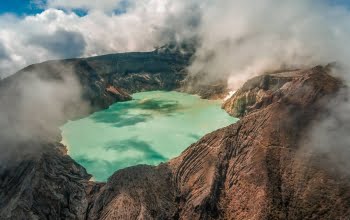
Ijen volcano tour 2 day 1 night from Banyuwangi airport
Ijen tour from Banyuwangi 2 Day 1 Night Ijen tour from Banyuwangi 2 Day 1 Night | Ijen crater has sunrise and green views. Not only that, the Ijen plateau or Ijen Crater also has a blue flame/blue fire phenomenon that there are only 2 in the world. one in Iceland. to see the blue... read more
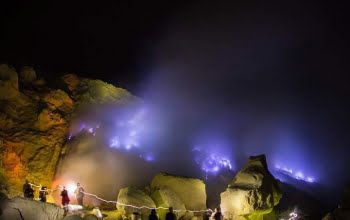
Kawah Ijen Midnight Tour From Banyuwangi | Sharing Tour
Kawah Ijen Midnight Tour From Banyuwangi – A short highlight tour for hiking Kawah Ijen by night to see the blue fire, sunrise, and sulfur mining activities. This is a shared tour package with other guests who also stay in our place at the same time and also the cheapest package which very suits backpackers on... read more
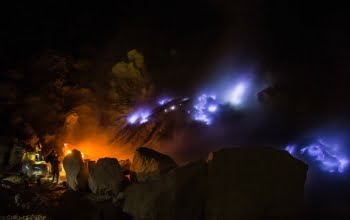
Ijen crater tour from Bali 1 Day Tour | Privat Tour
Ijen crater tour from Bali 1 Day | Ijen crater tour Ijen Crater Tour from Bali is probably one of my favorite tourism destinations for first-time visitors in Indonesia. The landscape is out of this world. One of the highlights of visiting Ijen is the blue flames, which you can only see at night. The... read more
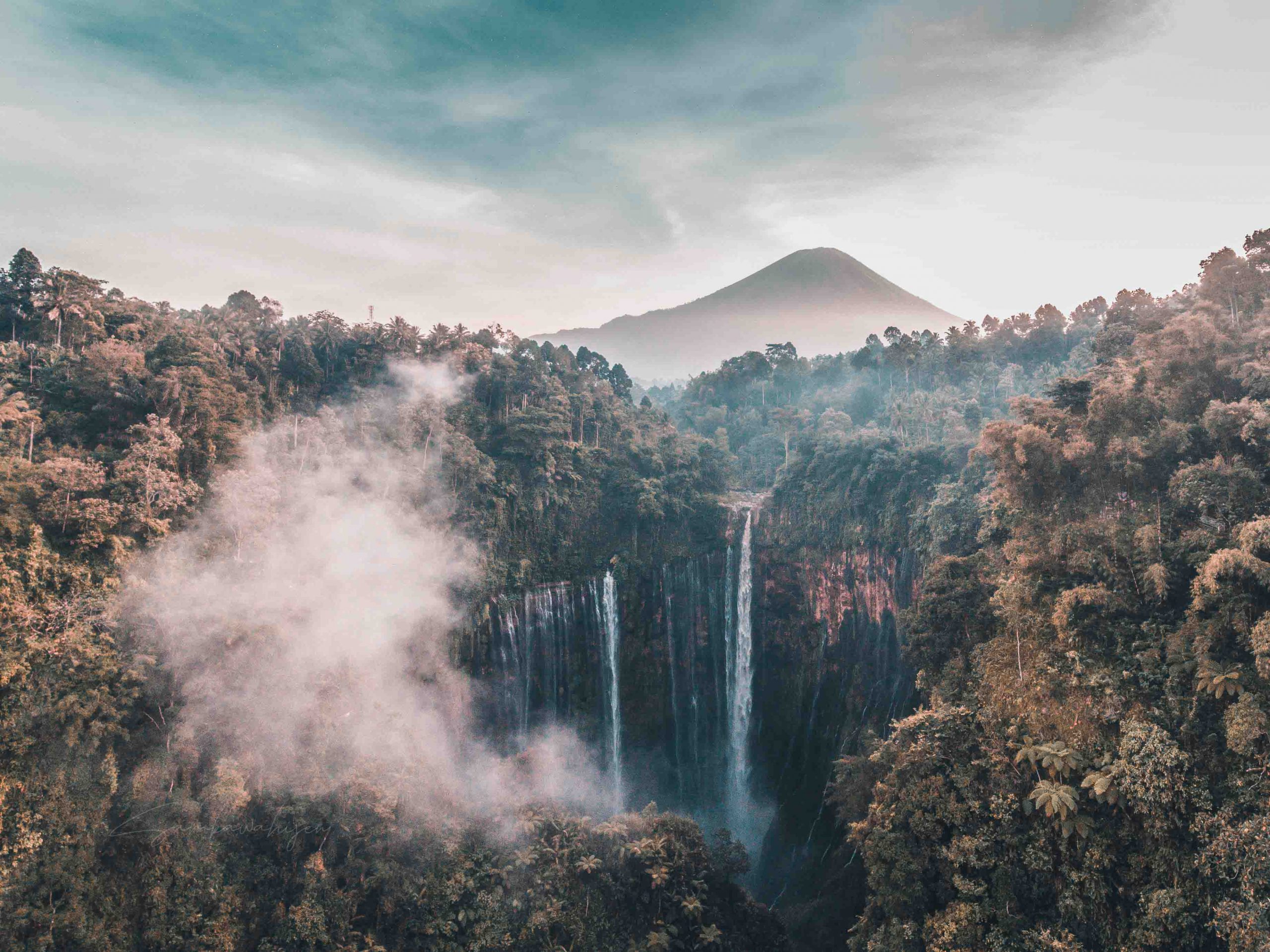
Bromo Ijen Tumpak Sewu from Bali 4D3N Back To Bali
Bromo Ijen Tumpak Sewu 3 best tourist spots in East Java, namely visiting the sunrise on Mount Bromo, the Blue Fire of Ijen Crater in Banyuwangi, and Tumpak Sewu waterfall in Lumajang. The tour package program starts with a pick-up in Surabaya or Bali Here is the Itinerary of the Tour Packages for Mount Bromo... read more
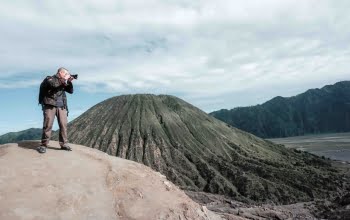
Bromo Ijen Crater tour from malang Finish Ketapang Harbor
Bromo Ijen Blue fire Tour 3 day 2 Night Tour Package is one of the Mount Bromo tour package options that consists of three popular tourist objects in Java Island Indonesia. These tourism objects offer amazing landscapes from all sides. If you are interested to enjoy Ijen Crater trekking, Mount Bromo and Madakaripura Waterfall tour package has a duratio... read more

Mount Bromo Ijen Tour From Surabaya 3 Day 2 Night ( 2025 )
Mount Bromo Ijen Tour: The Mount Bromo and Ijen tour package is one of the most captivating travel experiences in East Java, showcasing the raw beauty of Indonesia’s volcanic landscapes. This adventure is perfect for anyone seeking a meaningful holiday, whether you’re travelling with family, friends, a group, or solo. The spectacular sunrise over Mou... read more

Mount Ijen Blue Fire Tour From Banyuwangi 1 Day Tour
Mount Ijen Blue Fire Tour From Banyuwangi 1-Day Tour Mount Ijen Blue Fire Tour From Banyuwangi 1 Day Trip – is one of the challenging adventure activities that can be an option to add a beautiful impression during holiday time. Climbing to the crater of Ijen is very different from climbing in other areas. Here,... read more
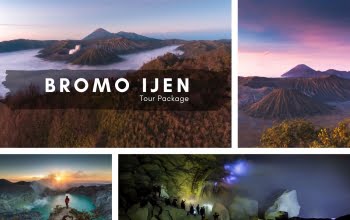
Bromo Ijen Tour package From Bali 3 Day 2 Night
Bromo Ijen Tour Package from Bali 3 Day 2 Night Bromo Ijen tour package is one of the best destinations in eastern Java that offers natural attractions centred on natural beauty. The beauty of tourism is that it can provide its value of happiness for holidays with family members, friends, groups, or individuals. Holidays to... read more
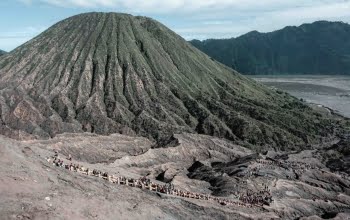
Bromo Midnight Tour From Surabaya | Privat Tour
Bromo Midnight Tour From Surabaya | Privat Tour read more

Mount Bromo – Ijen Blue Fire Tour 3 Day From Surabaya
Mount Bromo Ijen Blue Fire Tour Package From Surabaya – The trip start in Surabaya and finishes in Surabaya with a duration of 3 Days 2 Nights Tour, Discover Mount Bromo Sunrise, Ijen Crater Blue Fire Tour, and other interesting tourist objects such as Waterfall and Plantation at Banyuwangi, East Java, Indonesia. If you have... read more
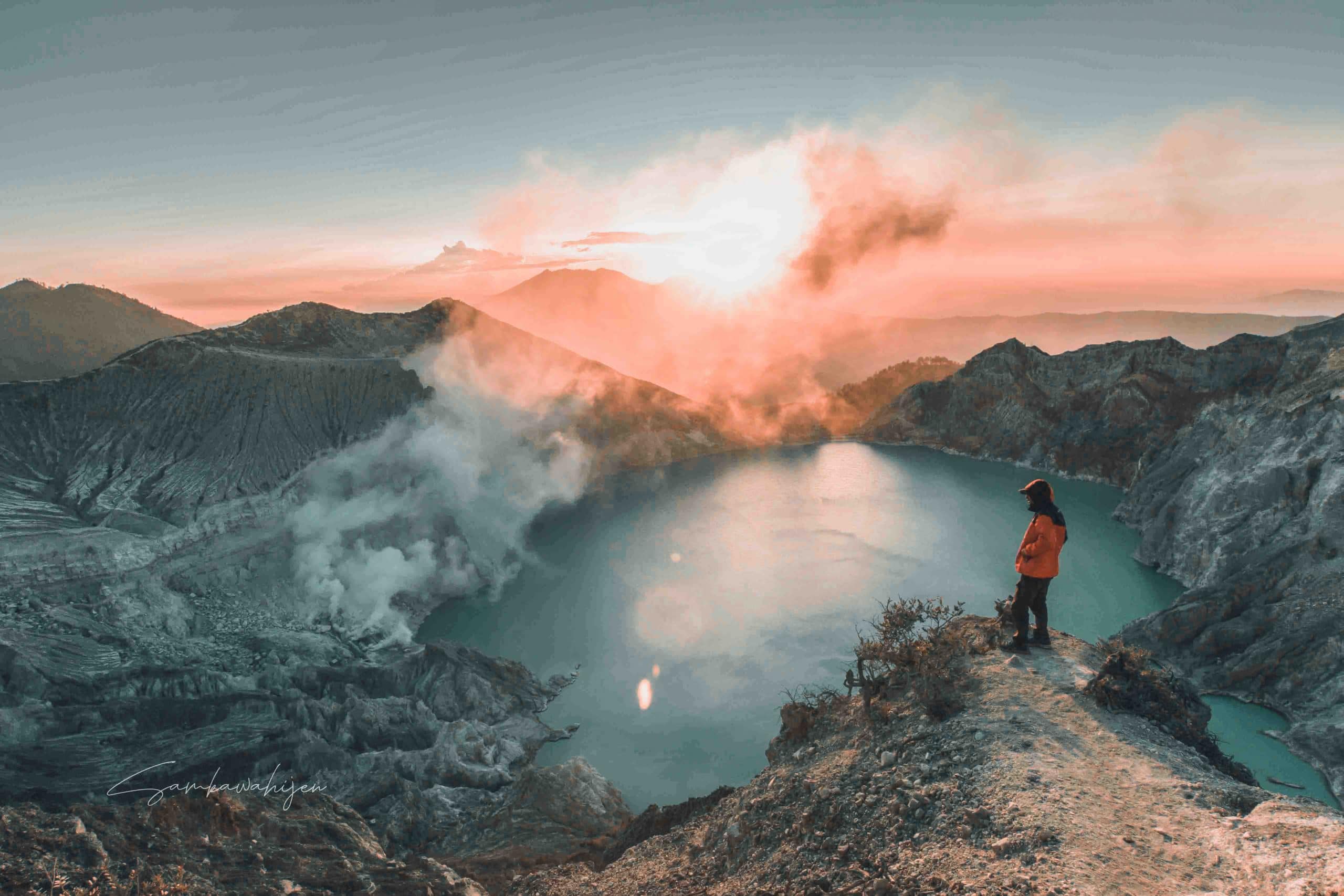
Ijen Blue Fire Tour: 1 Day tour from Bali
Ijen Blue Fire Tour 1 Day 1 Night From Bali Ijen Blue Fire Tour 1 Day 1 Night From Bali is the best choice if you decide to start this Trip from Bali (or Ketapang). Located only one hour away from the ferry harbour connecting Bali, Kawah Ijen is a composite volcano offering one of... read more
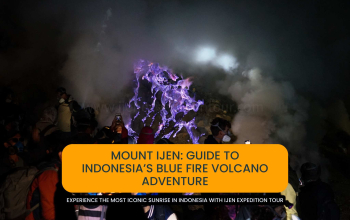
Mount Ijen: Guide to Indonesia’s Blue Fire Volcano Adventure
Mount Ijen is a special volcano in East Java, Indonesia. It is famous for its bright blue fire, a colourful acidic crater lake, and the hardworking sulphur miners who work there every day. Climbing Mount Ijen is not just about seeing great views — it’s about experiencing the power of nature and the strength of... read more

Bromo-Ijen crater-Sukamade 4 day 3 Night
Bromo – Ijen crater – Sukamade tour is one of the tour packages that we offer for the tourists outside there. For approximately 4 Days 3 Nights, our team will invite you to enjoy the charm of the city of Banyuwangi. Enjoying the beautiful sunrise panorama on Mount Bromo on the first day, and then... read more
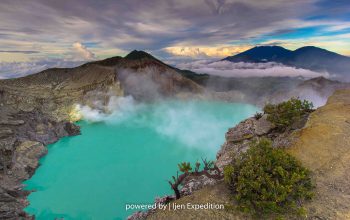
Frequently Asked Questions about Ijen Crater
Frequently Asked Questions about Ijen Crater Ijen Crater is a volcanic crater lake located in Banyuwangi Regency, East Java, Indonesia. It is home to a variety of natural wonders, including the famous Blue Fire, the acidic lake, and the sulfur mines. What is Ijen Crater? Ijen Crater is a stratovolcano that last erupted in 1871.... read more
Contact Us
If you have any questions, please contact us.
-
Hotline
+6285748711646 -
Whatsapp
085748711646 -
Email
admin@ijenexpedition.com


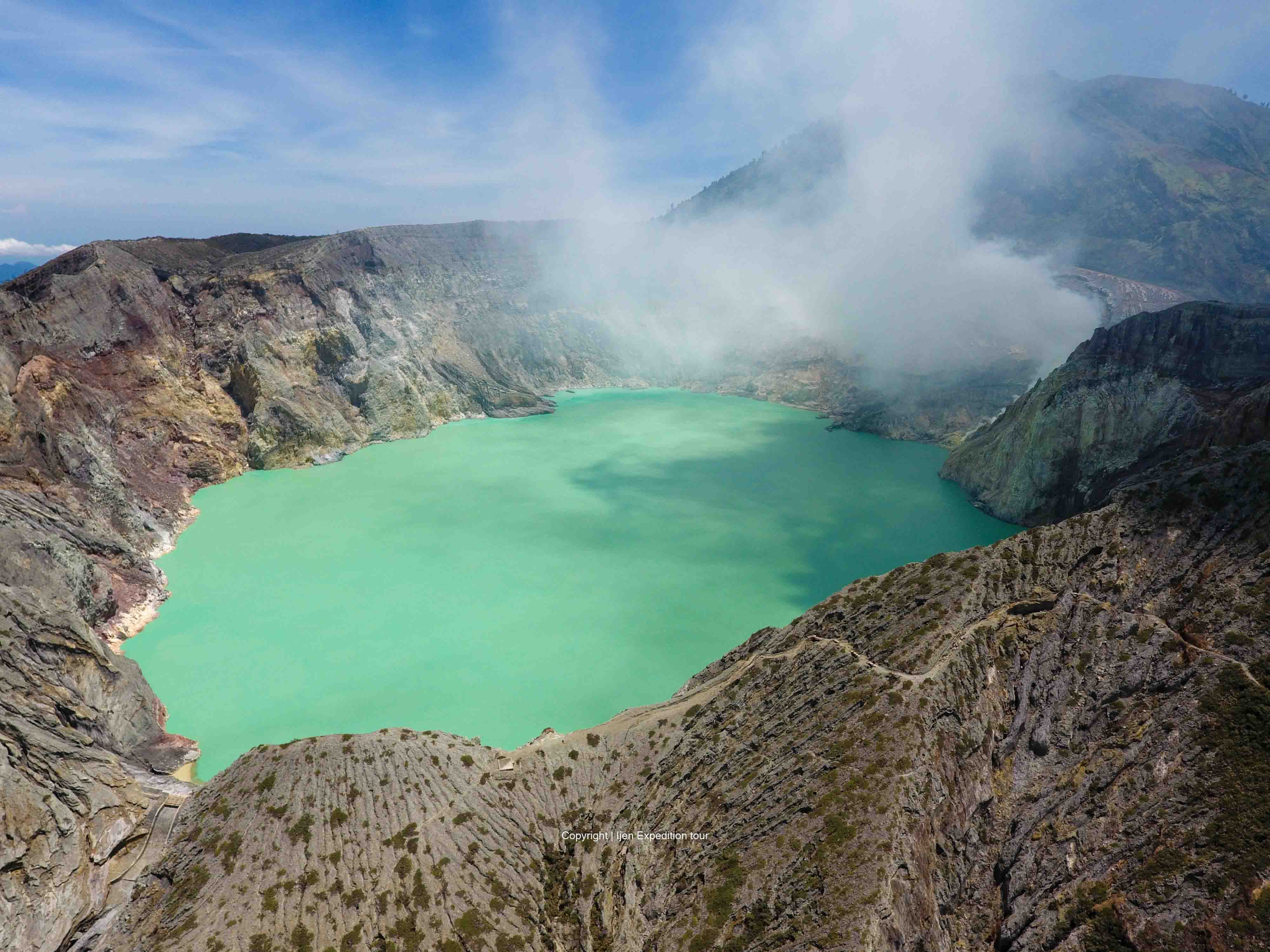


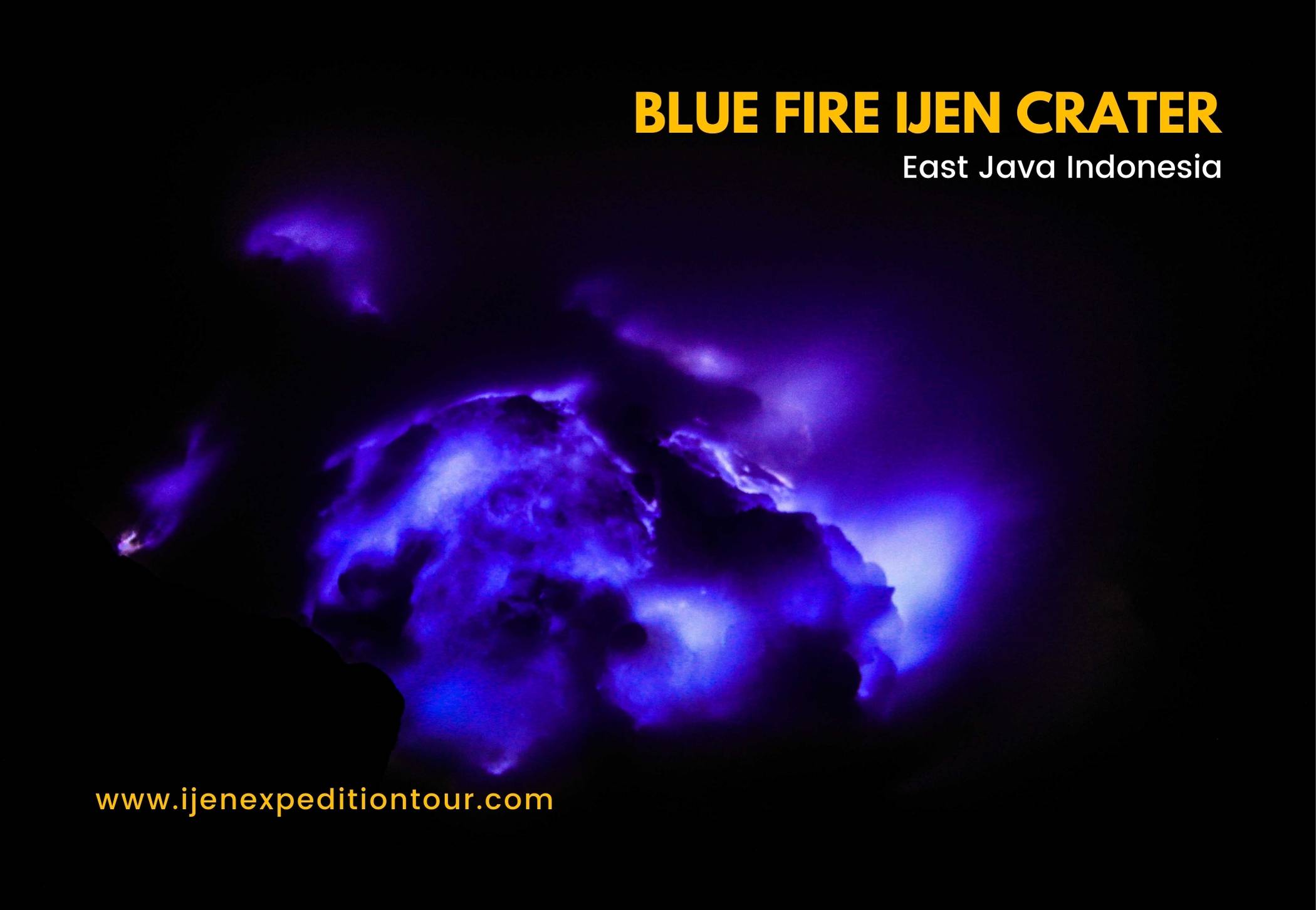


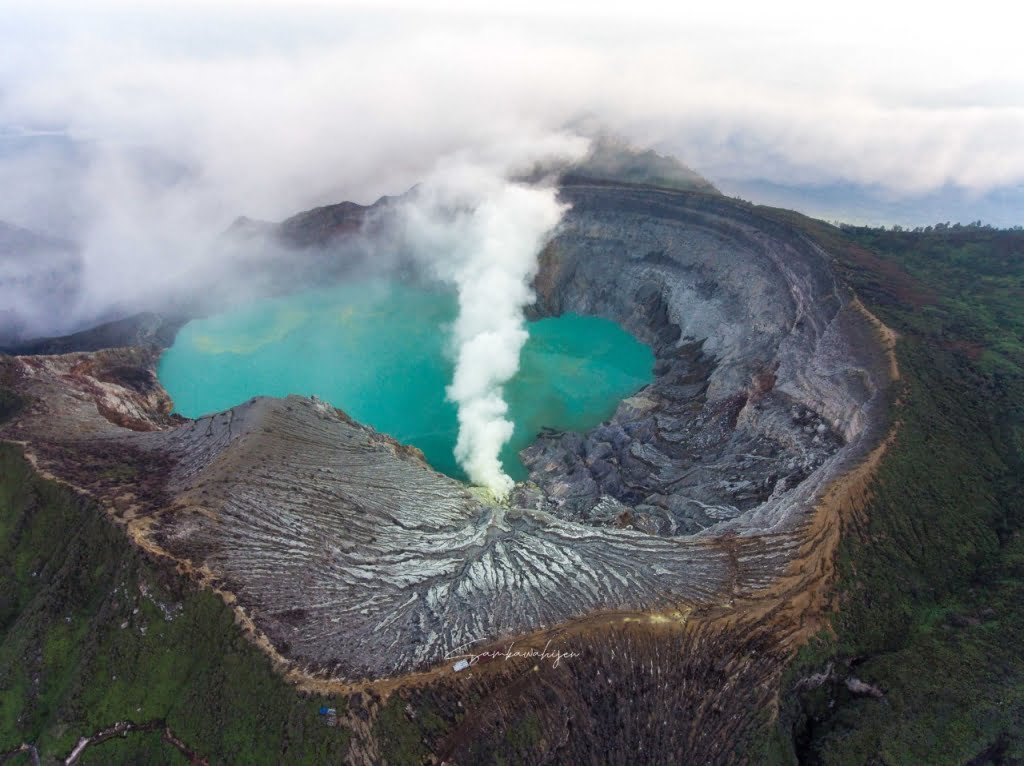


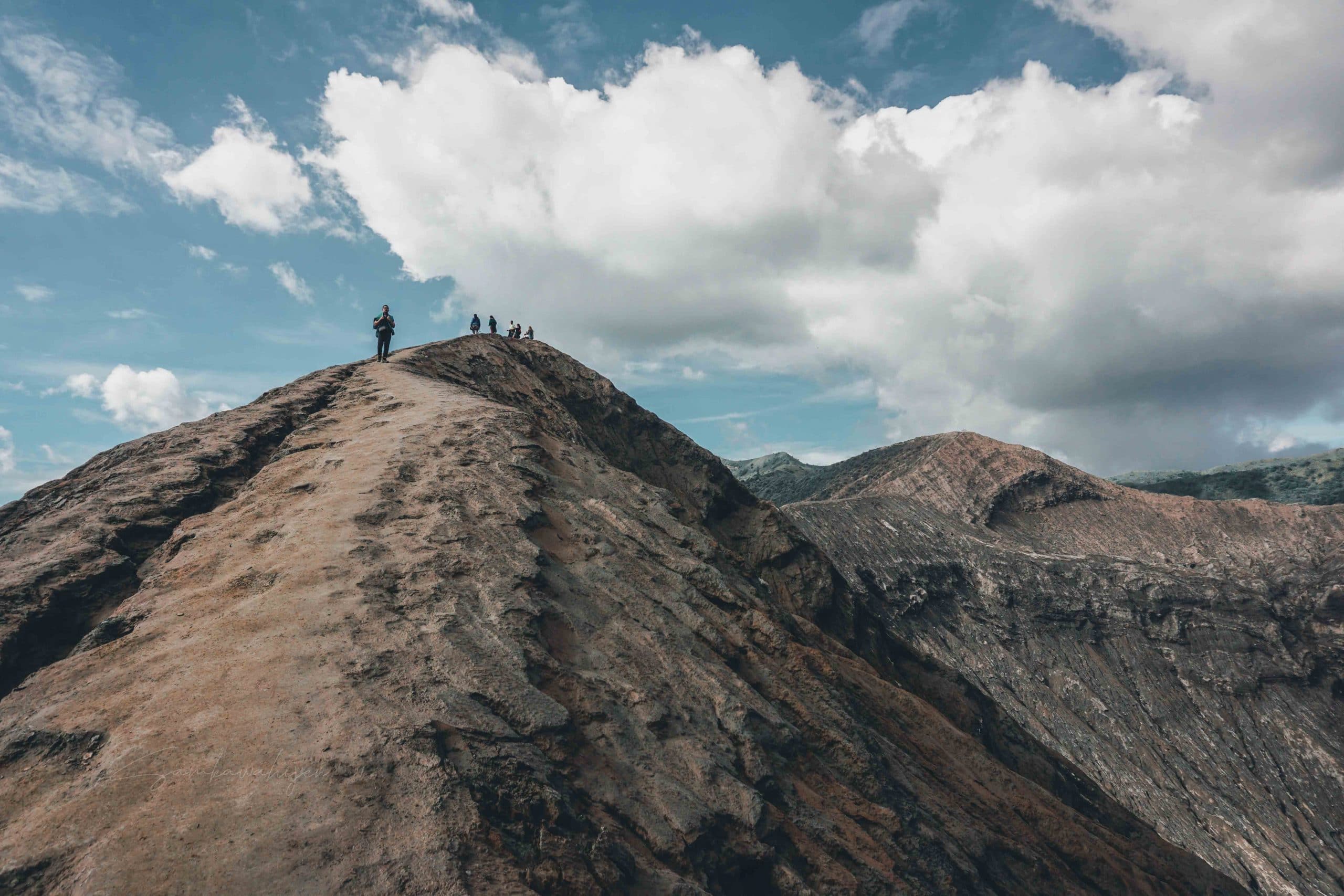



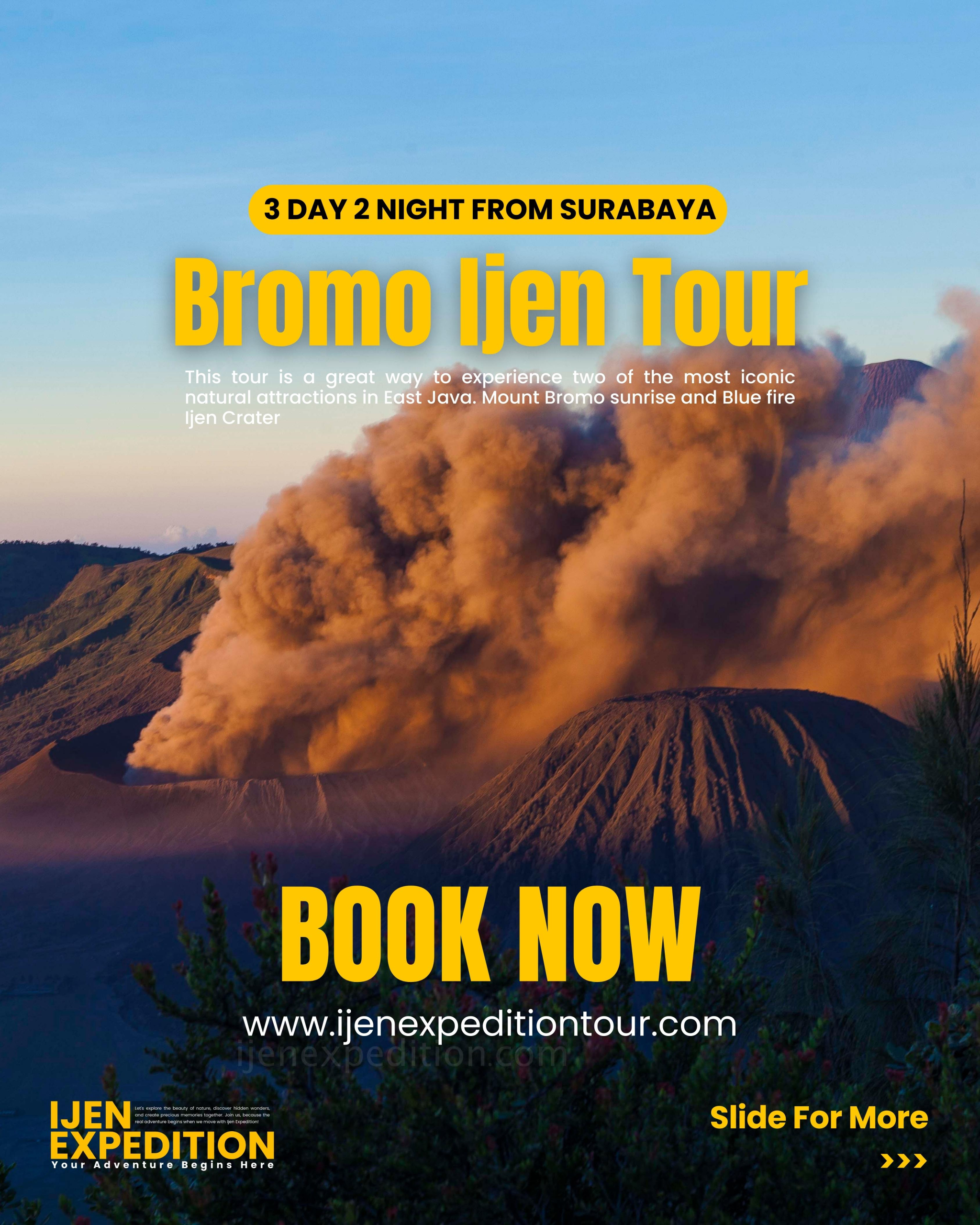

2 comment